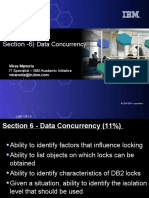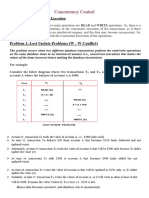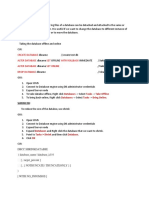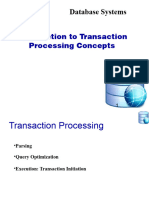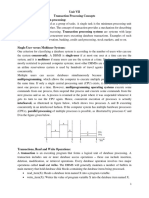0% found this document useful (0 votes)
181 views2 pagesTransaction Isolation Level
Transactions in SQL Server occur within transaction isolation levels that control locking and concurrency. There are different types of locks that protect shared resources and ensure reliable transactions. Issues can arise from lock contention, long-term blocking when locks are held too long, and deadlocks between dependent transactions. Transaction isolation levels determine how transactions accept inconsistent data from "dirty reads" or other transactions, ranging from read uncommitted to serializable isolation.
Uploaded by
rajakumariCopyright
© © All Rights Reserved
We take content rights seriously. If you suspect this is your content, claim it here.
Available Formats
Download as DOCX, PDF, TXT or read online on Scribd
0% found this document useful (0 votes)
181 views2 pagesTransaction Isolation Level
Transactions in SQL Server occur within transaction isolation levels that control locking and concurrency. There are different types of locks that protect shared resources and ensure reliable transactions. Issues can arise from lock contention, long-term blocking when locks are held too long, and deadlocks between dependent transactions. Transaction isolation levels determine how transactions accept inconsistent data from "dirty reads" or other transactions, ranging from read uncommitted to serializable isolation.
Uploaded by
rajakumariCopyright
© © All Rights Reserved
We take content rights seriously. If you suspect this is your content, claim it here.
Available Formats
Download as DOCX, PDF, TXT or read online on Scribd
/ 2


















































